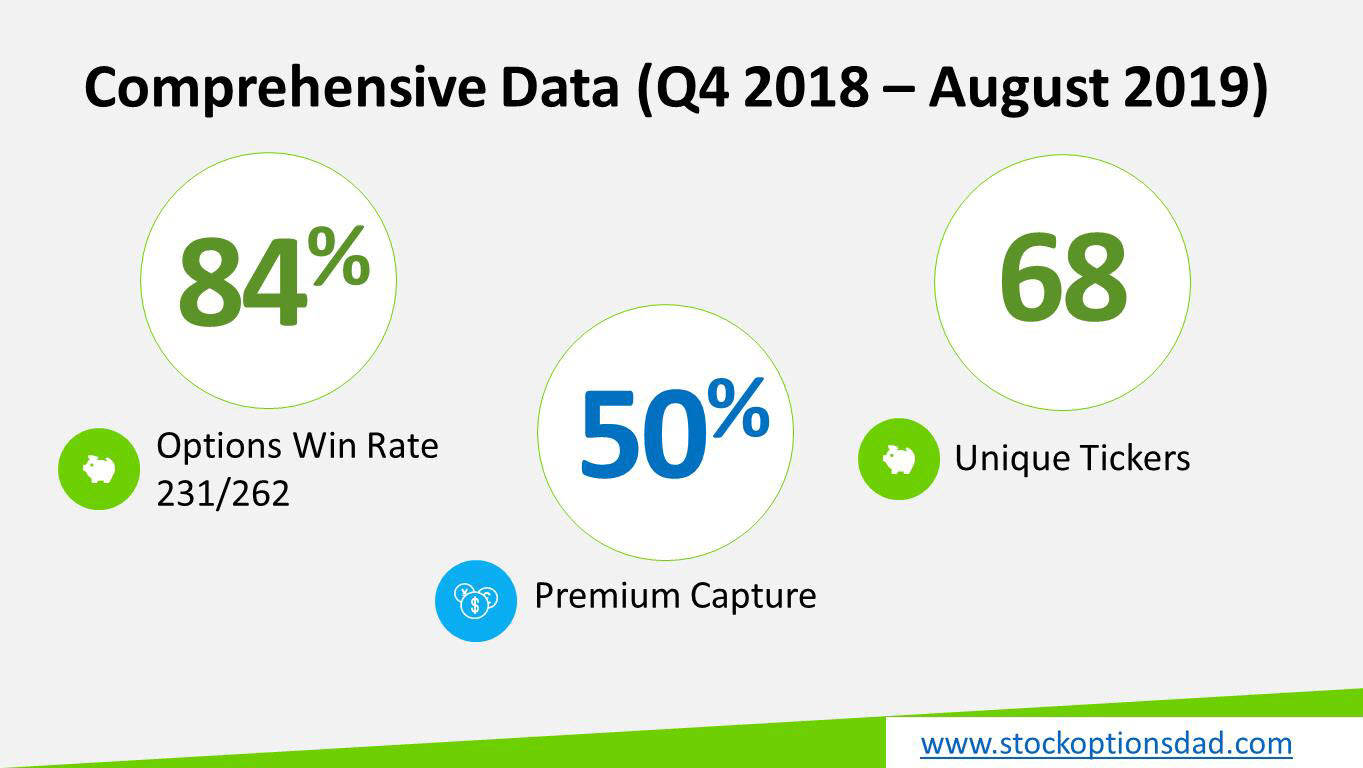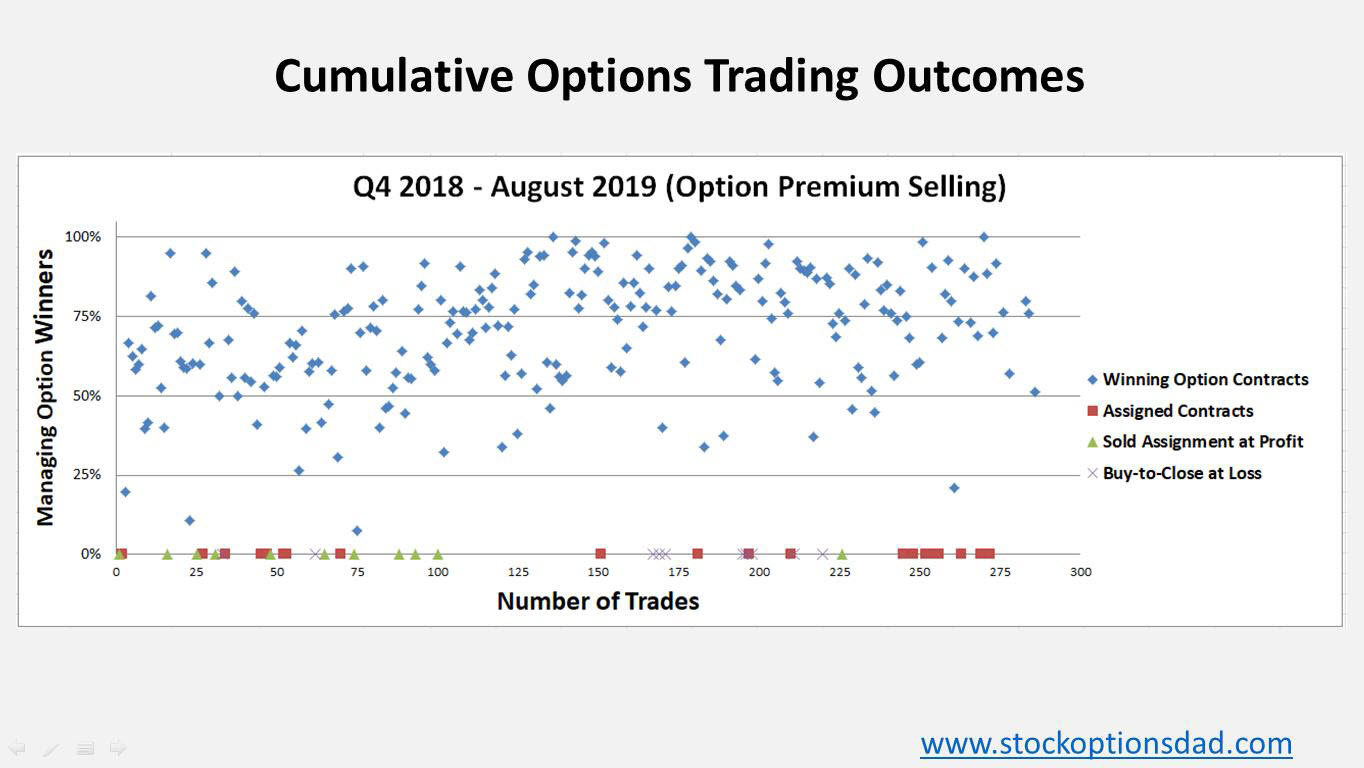Those that subscribe to the efficient market hypothesis believe that there’s no edge or advantage when it comes to picking stocks. Thus, stock-picking is a binary event and boils down to a 50/50 probability or simply chance. Everything that can be possibly known about a stock is known, and all the available information, technical analysis, and fundamental analysis is priced into the underlying stock price. The efficient market theory may be the Achilles heel of professional money managers’ performance and their inability to outperform their benchmarks. A staggering 92% of actively managed funds do not outperform their benchmark hence the massive inflows into passive index investing and ETFs.
Furthermore, when looking at The Russell 3000 Index over a 26-year timeframe (1983 to 2006) which comprises the largest 3000 U.S. companies, 39% of stocks were unprofitable investments, 64% of stocks underperformed the Russell 3000 and 25% of stocks were responsible for all the market’s gains. Taken together, only 36% of stocks outperformed the Russell 3000 index. If the efficient market theory is correct, is stock picking a useless endeavor? If stock-picking boils down to chance, is there a strategy that places the statistical odds of success in one’s favor?
Efficient Market Hypothesis
Markets aren’t always functioning efficiently. Markets can be irrational and become overbought or oversold. Outside of these extremes, however, markets are efficient, and over the long-term the vast majority of actively managed funds are unsuccessful at beating their benchmarks. Everything that can possibly be known about a stock is known, and there’s no edge in stock picking. As of Q1 2019, for the ninth consecutive year, the majority (64.5%) of large-cap funds lagged the S&P 500 last year. The longer the timeframe, the weaker the performance, after 10 years, 85% of large-cap funds underperformed the S&P 500, and after 15 years, nearly 92% are underperforming the index (Figures 1 and 2). These dismal results hold true across large-cap, mid-cap, and small-cap funds. Even if these actively managed funds happen to outperform their index, it’s due to chance, and this margin of outperformance is primarily negated by hefty management fees, rendering stock-picking useless. To further emphasize this point, for the Russell 3000, 39% of stocks were unprofitable investments, 64% of stocks underperformed the index, and 25% of stocks were responsible for all the market’s gains. Taken together, only 36% of stocks outperformed the Russell 3000 index.


Figures 1 and 2 – Time based underperformance of actively managed funds relative to the S&P 500 (Active Fund Managers Trail S&P 500)


Figures 3 and 4 – Data summarizing the performance of individual stocks relative to the Russell 3000 index. Highlighting the fact that only 36% of stocks had a higher return than the index and 25% of stocks accounted for all of the market’s gains. (The_Capitalism_Distribution)
Even Distribution of Returns
If the fact that 92% of actively managed funds do not outperform their index and that only 25% of stocks accounted for all the market’s gains wasn’t compelling enough, the distribution of returns also supports the efficient market hypothesis. The S&P 500 moves in a standard distribution over time, the number of daily moves is evenly distributed. There’s an equal and even number of days where the market moved up 0.6% as it moved down 0.6% (Figure 5). The market has fluctuated between a 2% loss and a 2% gain 94% of the time. Markets move in a standard distribution over time; there is no pattern or predicable cycles over the long-term which renders stock picking to random chance or a 50/50 probability. Interestingly, the market does move up over time due to positive skew in these data attributable to the fact that indexes are capitalization-weighted. This means that successful companies receive larger weightings in the index. Conversely, unsuccessful companies receive smaller weightings and are inevitably removed from the index. This disproportionally favors successful, growing companies hence the fact that only 25% of companies account for all the market gains.

Figure 5 – Standard distribution of daily market moves of the S&P 500 for 65 years
Options Provide Statistical Edge
The only way to consistently and reliably profit from this even distribution and market behavior is via options trading. Options trading allows one to profit without predicting which way the stock will move. Options trading isn’t about whether or not the stock will move up or down; it’s about the probability of the stock not moving up or down more than a specified amount. Options allow your portfolio to generate smooth and consistent income month after month without predicting which way the stock market will move. Options are betting on where stocks won’t go, not where they will go. Running an option-based portfolio offers a superior risk profile relative to a stock-based portfolio while providing a statistical edge to optimize favorable trade outcomes. Options trading is a long-term game that requires discipline, patience, time, maximizing the number of trade occurrences and continuing to trade through all market conditions. Put simply; an options-based approach provides a margin of safety with a decreased risk profile while providing high-probability win rates.
Life Insurance Parallels
Insurance companies sell policies based on risk factors, then price these policies to their advantage. Insurance companies are betting on probabilities and sell overpriced policies above their expected losses. The insurer agrees to pay out a specific amount of money for a specific loss (i.e. death). In return, the insurance company is paid monthly premiums based on this risk-based revenue model. Insurance companies sell policies with a premium cost level that maximizes a statistical edge to the insurance company’s benefit. The goal is to collect premiums over the course of the policy and never payout on the policies they sell. So, the probability of paying out on the policy is very low while the premiums received, over the policy lifespan will exceed your total benefit. In terms of life insurance, it’s the probability that you won’t die before your predicted lifespan so the insurance won’t have to pay. In order to spread the potential payout risk, the insurance company will sell as many policies as possible to collect as much premium income as possible.
Options trading is much like insurance. I receive premium payments (policy payments) in exchange for selling options (insurance). I sell these options with a statistical edge (underwriting) and a high-probability of winning the trade (insurance won’t have to pay). Occasionally, options move against you (death occurred) and you’re assigned stock (insurance is paid out) however in order to spread the risk of being assigned shares, options (insurance) are sold across a diversity of tickers that include both stocks and ETFs with varying expiration dates and optimal sector exposure. Additionally, risk is mitigated by appropriate capital allocation, position-sizing, and holding cash reserves in the portfolio.
Results
Sticking to a set of fundamentals, this approach can provide long-term, high-probability win rates to generate consistent income while circumventing drastic market moves. Over the previous 11 months through both bull and bear markets, the win rate percentage was 84% (231/262). Over the previous 11 months, the options-based portfolio outperformed the S&P 500 over the same period by producing a 0.9% return against 0.4% for the S&P 500 (Figures 6-8).

Figure 6 – Options based portfolio return (0.90%) in comparison to the S&P 500 return (0.43%)

Figure 7 – Comprehensive options metrics over the previous 11 months

Figure 8 – Dot plot summarizing ~260 trades over the previous 11 month period
Conclusion
Markets are efficient, and over the long-term the vast majority of actively managed funds are unsuccessful at beating their benchmarks. A staggering 92% of actively managed funds do not outperform their benchmark. Furthermore, when looking at The Russell 3000 Index over a 26-year timeframe (1983 to 2006) which comprises the largest 3000 U.S. companies, 39% of stocks were unprofitable investments, 64% of stocks underperformed the Russell 3000 and 25% of stocks were responsible for all the market’s gains. Taken together, only 36% of stocks outperformed the Russell 3000 index. Everything that can possibly be known about a stock is known, and there’s no edge in stock picking, hence the efficient market hypothesis. The only way to profit from this even distribution and market behavior is via options trading. Options trading allow one to profit without predicting which way the stock will move. Options allow your portfolio to generate smooth and consistent income month after month without predicting which way the stock market will move. Options are betting on where stocks won’t go, not where they will go and provide a statistical advantage.
An options-based portfolio has allowed me to do something 92% of actively managed funds haven’t been able to accomplish and that outperforms the broader index consistently despite the volatility and the month of August negatively impacting my portfolio in a disproportional manner. Selling options with a favorable risk profile and a high probability of success is the key. Options fundamentals provide long-term durable high-probability win rates to generate consistent income while mitigating drastic market moves. I’ve demonstrated an 84% options win rate over the previous 11 months through both bull and bear markets while outperforming the S&P 500 over the same period by a wide margin producing a 0.9% return against a 0.3% for the S&P 500 with a lower risk profile. Taken together, options trading is a long game that requires discipline, patience, time, maximizing the number of trade occurrences and continuing to trade through all market conditions with the probability of success in your favor.
Thanks for reading,
The INO.com Team
Disclosure: The author holds shares in AAL, BAC, C, CVS, GPS, GE, HLF, KSS, SLB, TRIP, URBN, USO, WBA, and X. The author has no business relationship with any companies mentioned in this article. This article is not intended to be a recommendation to buy or sell any stock or ETF mentioned.
